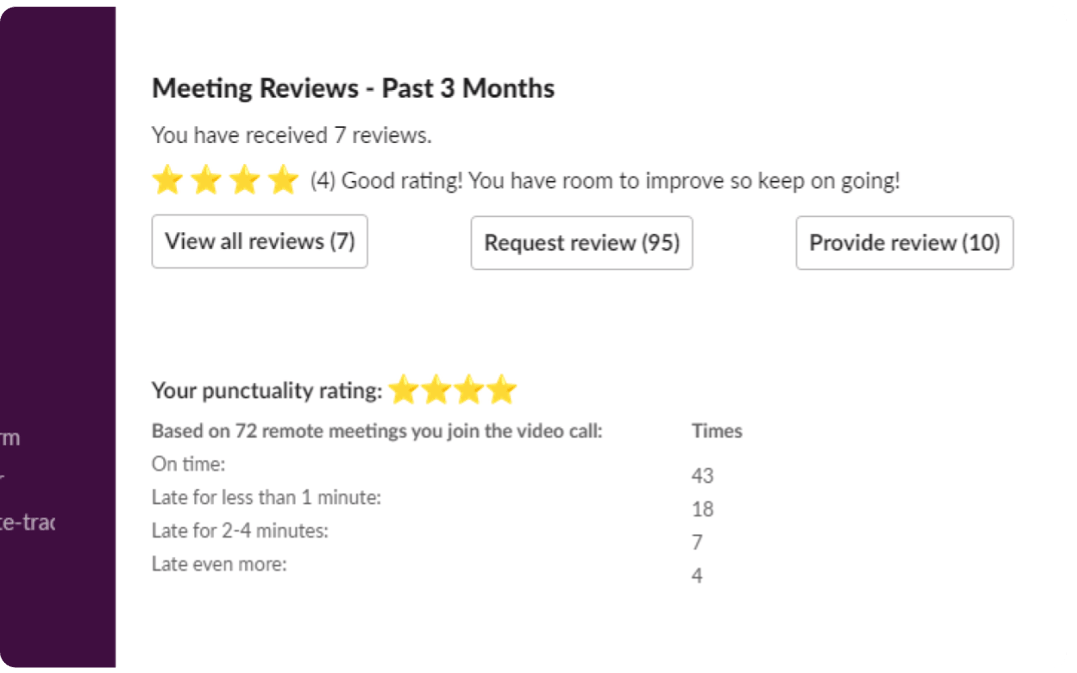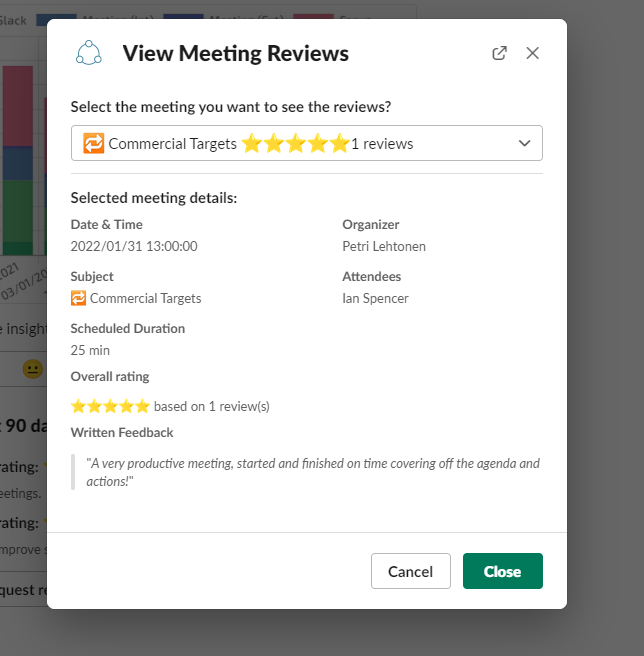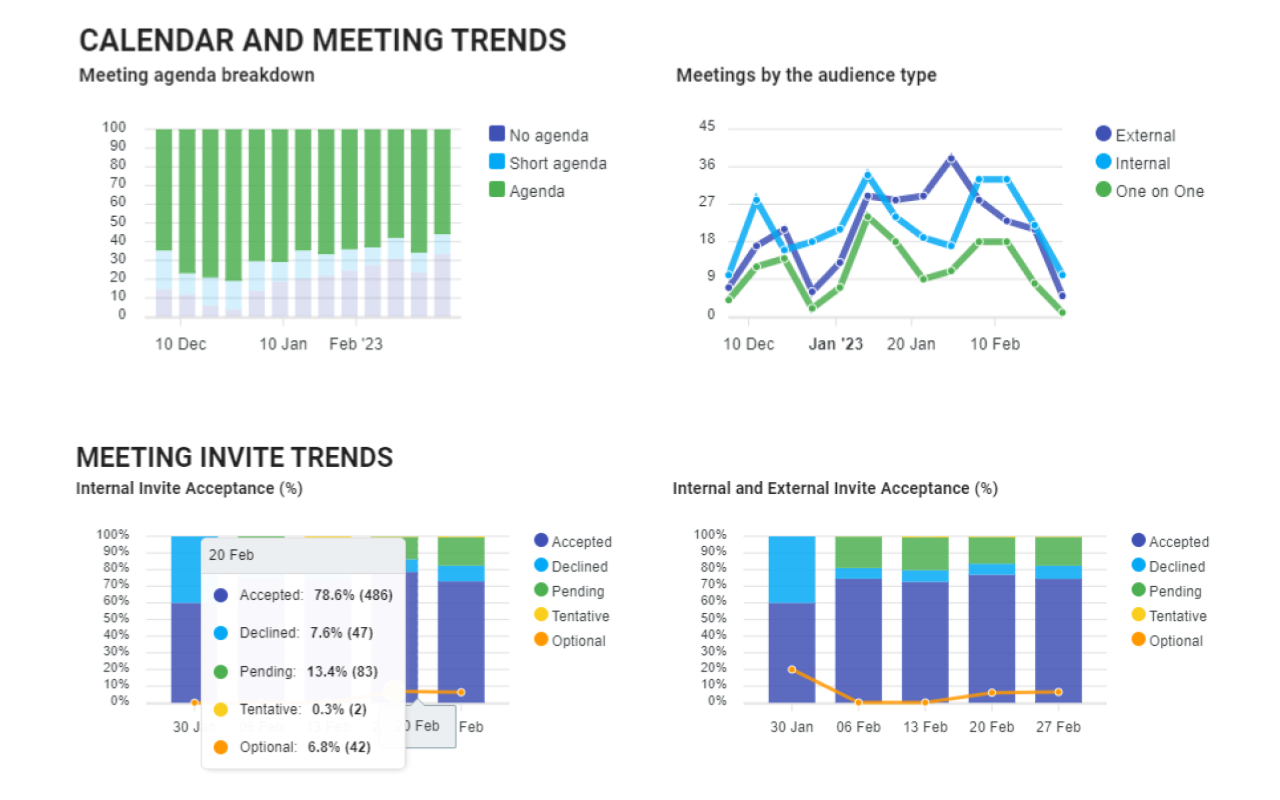Meetings are a cornerstone of our professional lives. They serve as the stage for brainstorming innovative ideas, making critical decisions, solving complex problems, and fostering team cohesion. However, the meeting effectiveness and productivity have often been a topic of debate. Are we utilizing our time efficiently? Are all participants feeling heard and valued? These are the questions that often linger in the minds of professionals across the globe.
Feedback, in the context of meetings, has seen a significant evolution over the years. Initially, organizations have relied on traditional methods such as post-meeting surveys and questionnaires to gauge the effectiveness of their meetings. These tools have served their purpose, providing a platform for participants to voice their opinions and suggestions. However, they are not without their challenges. The process of setting up these surveys, planning the questions, sending them out, and then collecting and analyzing the data is often cumbersome and time-consuming.

In this article, we'll delve deeper into this evolution, exploring the journey from surveys to ratings and reviews, the challenges of traditional meeting feedback methods, and the transformative potential of meeting ratings and reviews. We'll also look at how advanced collaboration analytics tools and meeting analytics more specifically are making this transition smoother and more effective. So, let's embark on this journey and explore the future of feedback in meetings.
Traditional Meeting Surveys and Their Challenges
As we look into the evolution of meeting feedback mechanisms, it's crucial to understand the traditional methods that have been widely used. These methods primarily rely on surveys and questionnaires, distributed to participants after the meeting.
Post-Meeting Surveys and Feedback Questionnaires
These are two of the most common methods for gathering feedback. Immediately after a meeting, attendees receive a survey asking them to rate various aspects, such as the effectiveness of communication, the relevance of the discussed topics, and the overall meeting management. The aim was to capture immediate reactions while the meeting was still fresh in the participants' minds. Feedback Questionnaires are typically more detailed and included open-ended questions to collect more qualitative data, allowing participants to provide more nuanced feedback and suggestions. These were often used for larger, more formal meetings or workshops.
Other Methods for collecting feedback
Alternative methods included One-on-One Feedback and Group Discussions, particularly for smaller teams, where the meeting leader would either engage each participant in a personal conversation or facilitate a group discussion after the meeting. These methods foster open communication and collective problem-solving.
What Are the Challenges of Traditional Meeting Surveys?
However, these traditional methods have their challenges. They are often time-consuming and demanded significant effort from both the organizers and the participants. The data collected is usually vast and unstructured, making it difficult to analyze and draw actionable insights. Feedback is also often collected in separate survey tools or even physical formats, making storage, retrieval, and analysis over time challenging.

Several issues can hinder the effectiveness of the feedback process and limit its value. Here are the most common ones.
- Response Bias, where participants with strong feelings about the meeting are more likely to respond, skewing the results. Furthermore, participants may provide responses they assumed were expected, resulting in inaccurate data. Low Response Rates could reduce the usefulness of the feedback, as not all participants would have the time or see the value in completing the survey.
- Timing Issues also poses a significant challenge. If the survey is sent out too long after the meeting, participants might not remember the details accurately. Conversely, if sent immediately after the meeting, participants could be too busy with other tasks to complete it.
- Designing Effective Surveys is one of the major challenges with the meeting surveys. Creating clear, unbiased questions that could effectively elicit the desired information is often difficult. Ensuring the feedback collected is actionable can be a complex task.
- Interpretation of Results is another concern, as understanding and interpreting ambiguous or contradictory responses can make it challenging to derive meaningful insights and take appropriate action.
- Process is extremely time-consuming. Creating, distributing, and analyzing surveys and questionnaires can take a lot of time. It required substantial effort from the meeting organizers, who needed to plan the questions, set up the survey, distribute it to the participants, and then collect and analyze the responses.
- Data Scattered in Irrelevant Systems is another significant issue. Traditional feedback methods often lead to feedback data being collected and stored in separate systems like Google Forms or Microsoft Forms, or even in physical formats. This fragmentation hinders the ability to retrieve and analyze the data over time, obstructing the tracking of improvements and informed decision-making.
- The Lack of Anonymity can also affect the feedback process. If participants felt that their responses weren't anonymous, they might not provide honest feedback due to fear of repercussions, leading to skewed results and mistrust in the feedback process.
These challenges necessitate a more efficient, effective, and user-friendly way of collecting and analyzing meeting feedback. This is where the concept of meeting ratings and reviews comes in, which we will explore in the next section, and how it addresses the challenges of traditional feedback methods.

Meeting Ratings and Reviews: A New Standard for Meeting Feedback
As we've explored, traditional meeting feedback methods have several limitations. These challenges have paved the way for a more streamlined, efficient approach to gather and analyze feedback: Meeting Ratings and Reviews. This approach, inspired by the e-commerce sector where customer reviews have revolutionized business understanding and improvement, holds significant advantages and has the potential to become the new standard for meeting feedback.

Simplicity and Engagement
Rating a meeting is quick and easy, often involving a simple click on a star rating or selection of a number on a scale. This user-friendly process leads to higher response rates, as participants are more likely to provide feedback if it requires minimal time or effort. This simplicity fosters more engaged participants, leading to a meeting culture where attendees know their feedback matters and can effect real changes.
Richer Data for Data-Driven Meeting Improvements
While a numeric rating provides a quick snapshot of a meeting's effectiveness, the real goldmine of information comes from the reviews. Participants can share their thoughts, ideas, and suggestions in their own words, providing richer, more nuanced data than a simple yes/no survey question.

This qualitative data, when combined with meeting analytics, provides a comprehensive view of meeting culture health, enabling organizations to make data-driven decisions to improve their meetings. This could lead to more efficient meetings, better use of time, and ultimately, increased productivity.
Real-Time Feedback and Continuous Improvement
Meeting ratings and reviews can be collected immediately after the meeting, while the experience is still fresh in participants' minds, leading to more accurate and detailed feedback. Regular ratings and reviews enable teams to track their progress over time, identify trends, and make data-driven decisions for continuous improvement. This feedback loop fosters a culture of ongoing enhancements, allowing organizations to track progress, identify areas for improvement, and measure the impact of changes.

Anonymity, Transparency, and Accountability
Meeting ratings and reviews can be made anonymous, promoting honesty and transparency in feedback, leading to more accurate data and a more open feedback culture. This practice also brings greater transparency to meetings. Participants can see how their meetings are performing and where improvements are needed, resulting in greater accountability and fostering a stronger meeting culture.
Improved Meeting Experience
With more feedback and data, organizations can work to improve the overall meeting experience. This results in more effective, engaging, and enjoyable meetings while reducing meeting overload and cutting down poor quality meeting costs. In conclusion, just as customer reviews and analytics have transformed the world of e-commerce, meeting ratings, reviews, and analytics hold the potential to revolutionize the way we conduct and improve meetings.
Ready to Start Collecting Meeting Reviews?
The world of work is evolving, and so are the methods we use to gather feedback and improve our processes. Just as customer reviews and analytics have revolutionized the e-commerce industry, meeting ratings and reviews, combined with meeting analytics, have the potential to transform the way we conduct and improve meetings.
The shift from traditional feedback methods to a more dynamic, data-driven approach offers numerous benefits. It fosters a culture of transparency and continuous improvement, engages participants, and ultimately leads to more effective meetings.

At Flowtrace, we're excited to be at the forefront of this transformation. Our mission is to help teams work more effectively and productively, and we believe that meeting ratings, reviews, and analytics are key to achieving this. We invite you to join us on this journey and discover the power of data-driven meeting improvement.
Are you ready to revolutionize your meetings? Start your free trial with Flowtrace today.
